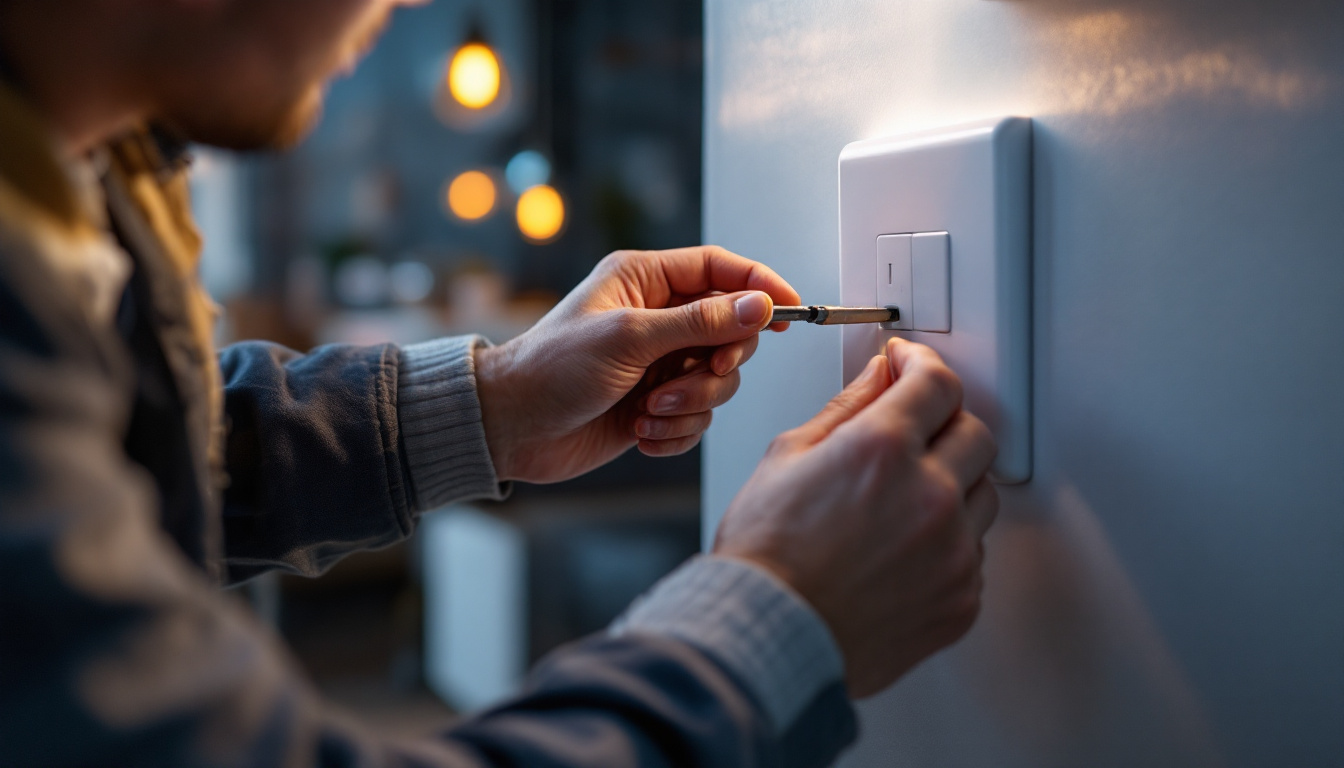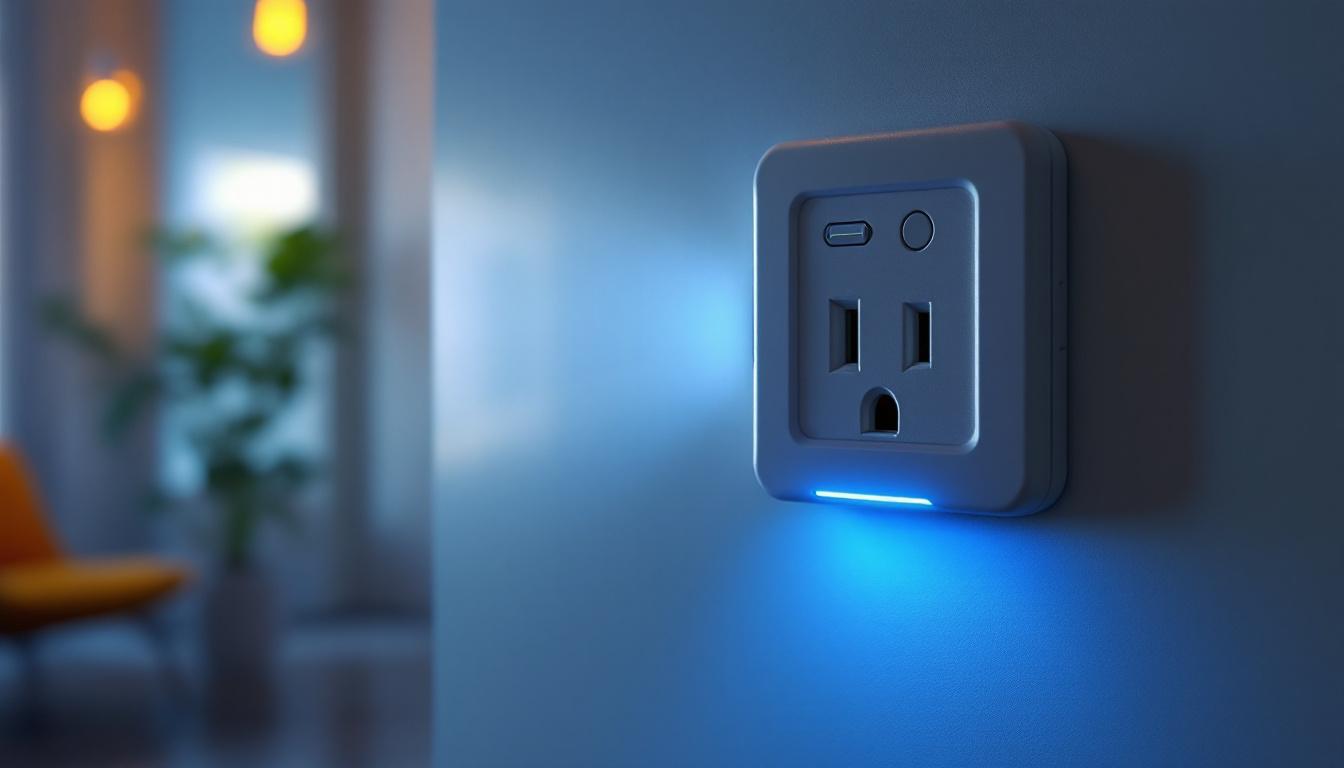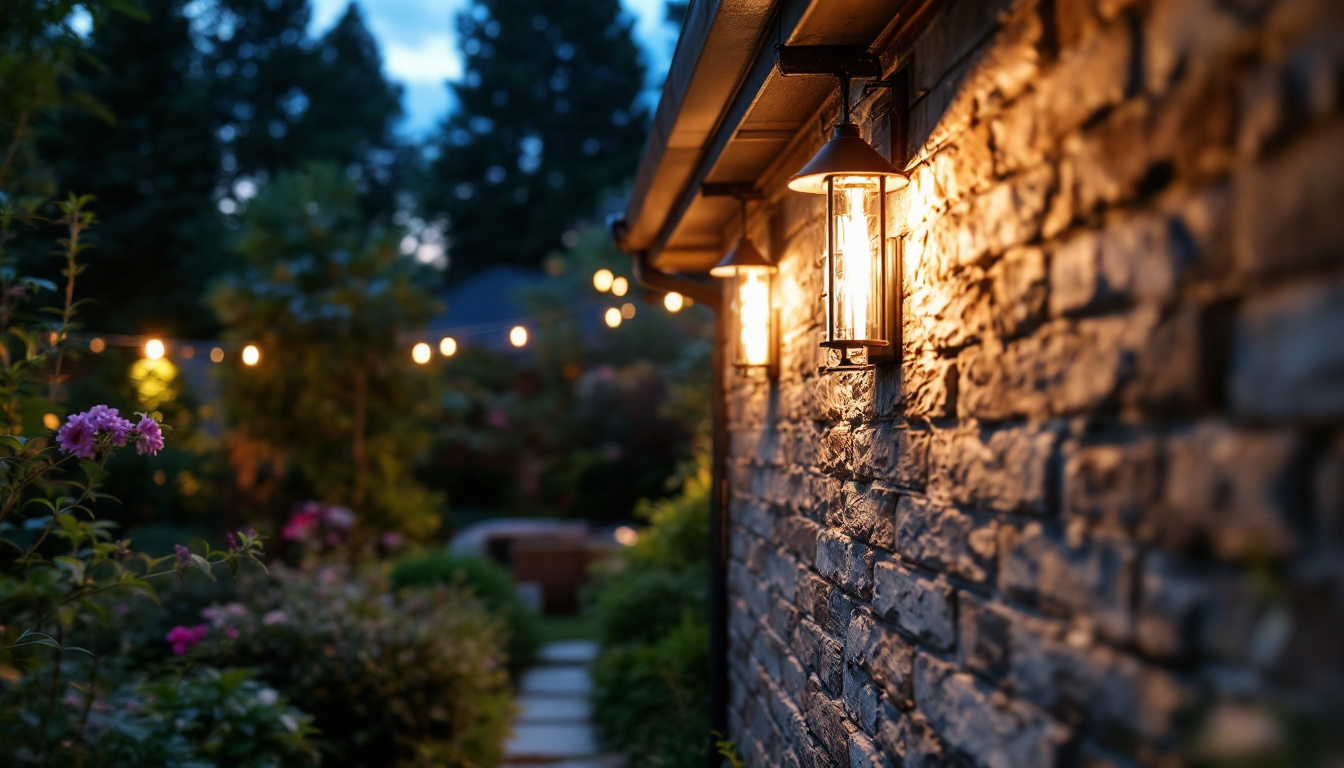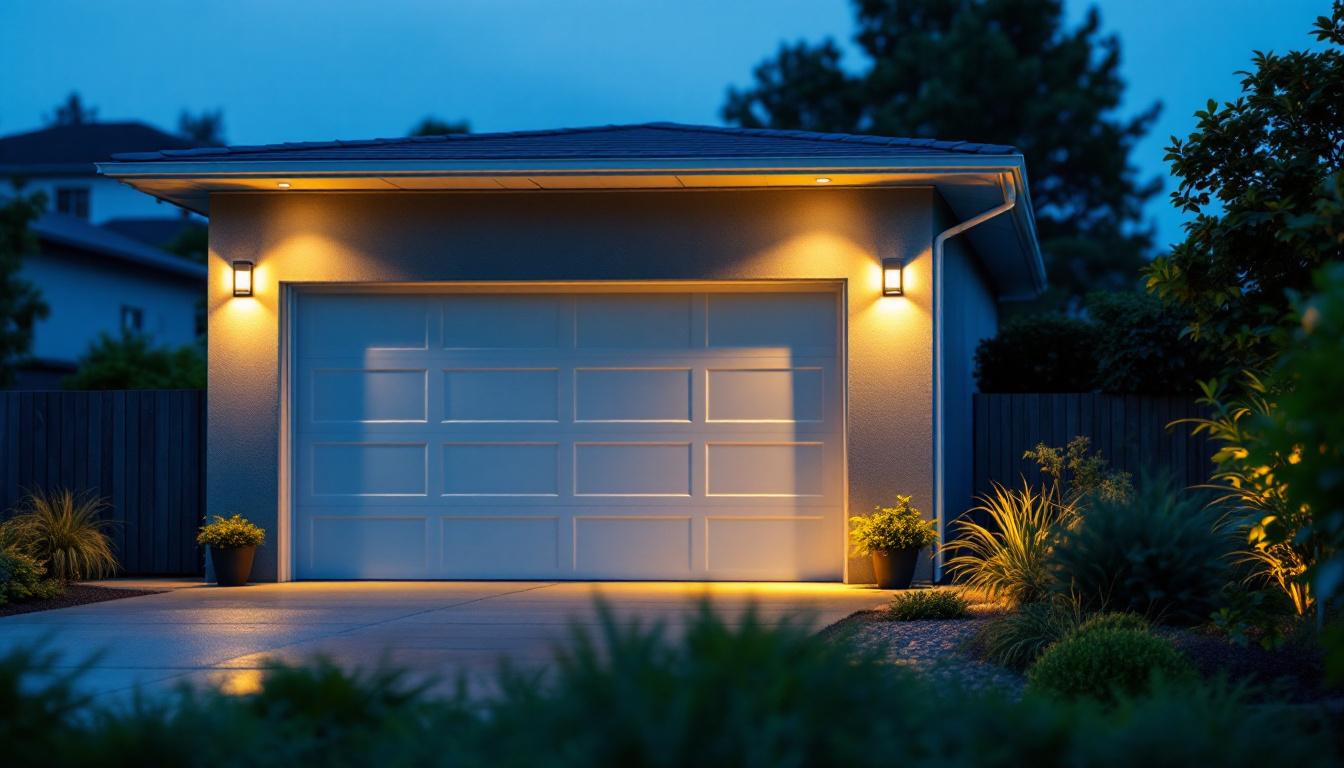
In the realm of electrical installations, lighting contractors play a pivotal role in ensuring that homes and businesses are not only illuminated but also equipped with safe and efficient electrical systems. One of the essential components in this field is the switch outlet. Understanding the intricacies of switch outlets can enhance a contractor’s ability to provide quality service and meet client needs effectively. This article delves into the various aspects of switch outlets, offering valuable insights for lighting contractors.
Switch outlets, often referred to as combination outlets, serve dual purposes: they function as both a standard electrical outlet and a light switch. This unique design allows for greater flexibility in managing electrical devices and lighting fixtures within a space. For lighting contractors, grasping the fundamentals of switch outlets is crucial for successful installations. They not only streamline the design of a room but also enhance the usability of electrical systems, making them an attractive option for both residential and commercial applications.
Moreover, switch outlets can significantly reduce clutter by minimizing the number of separate switches and outlets needed in a given area. This is particularly beneficial in smaller spaces where every inch counts, allowing for a cleaner, more organized appearance. In addition, the convenience of having a light switch and outlet in one location can improve the overall functionality of a room, making it easier to control lighting and power devices without having to navigate around furniture or other obstacles.
There are several types of switch outlets available in the market, each designed to cater to different needs. The most common types include:
Each type of switch outlet has its own installation requirements and applications, making it essential for contractors to choose the right type based on the specific needs of their clients. For instance, dimmer switch outlets are particularly popular in dining rooms and home theaters, where the ability to adjust lighting can create the perfect atmosphere for various activities. Similarly, three-way switch outlets are invaluable in multi-story homes, allowing homeowners to control lighting from both the top and bottom of a staircase, thereby enhancing safety and convenience.
A typical switch outlet consists of several components that work together to function effectively. Understanding these components is vital for troubleshooting and installation:
Familiarity with these components enables contractors to handle installations and repairs with confidence, ensuring that they meet safety standards and client expectations. Additionally, understanding the wiring configurations associated with each component is essential for effective troubleshooting. For example, knowing how to identify and rectify wiring issues can prevent potential hazards such as short circuits or electrical fires. Furthermore, the choice of materials for these components can also impact the longevity and reliability of the switch outlet, making it important for contractors to stay informed about the latest advancements in electrical components.
When it comes to installing switch outlets, several key considerations must be taken into account. Proper installation not only ensures functionality but also enhances safety and compliance with electrical codes.
Choosing the right location for a switch outlet is critical. Switch outlets should be easily accessible, allowing users to operate them without difficulty. Additionally, they should be placed at a height that complies with local building codes, typically around 48 inches from the floor.
Moreover, the positioning of switch outlets should take into account the layout of the room and the placement of furniture. Ensuring that outlets are not obstructed by furniture or other fixtures can significantly improve user experience.
Proper wiring is essential for the safe operation of switch outlets. Contractors must ensure that the wiring is appropriate for the load being supported. This includes using the correct gauge of wire and ensuring that connections are secure and insulated to prevent electrical shorts.
Additionally, it is important to follow the manufacturer’s instructions regarding wiring configurations. Each type of switch outlet may have specific requirements that must be adhered to for optimal performance.
Each region has its own electrical codes that govern the installation of switch outlets. Familiarity with these codes is essential for lighting contractors, as non-compliance can lead to safety hazards and legal issues.
Contractors should stay updated on local regulations and ensure that all installations meet the necessary standards. This not only protects the contractor but also ensures the safety of the end-users.
Switch outlets offer numerous benefits that make them an attractive option for both contractors and clients. Understanding these advantages can aid contractors in promoting their services effectively.
One of the primary benefits of switch outlets is their space-saving design. By combining a light switch and an electrical outlet into a single unit, they reduce the clutter of multiple switches and outlets on walls. This is particularly advantageous in smaller spaces where every inch counts.
Moreover, switch outlets can streamline the installation process, as they require less wiring and fewer components compared to separate switches and outlets. This efficiency can lead to reduced labor costs and quicker project completion times.
Switch outlets provide enhanced functionality by allowing users to control lighting and power sources from a single location. This is particularly beneficial in areas where multiple devices need to be managed, such as living rooms or home theaters.
Additionally, the integration of dimmer switches into switch outlets allows for customizable lighting solutions, enabling users to create the perfect ambiance for any occasion.
Switch outlets can contribute to improved safety in homes and businesses. By minimizing the number of exposed wires and connections, they reduce the risk of electrical hazards. Furthermore, many modern switch outlets come equipped with safety features such as ground fault circuit interrupters (GFCIs) that protect against electrical shocks.
Contractors can emphasize these safety benefits to clients, reinforcing the importance of investing in high-quality electrical installations.
Despite their advantages, switch outlets can encounter issues over time. Being able to identify and troubleshoot common problems is an essential skill for lighting contractors.
One of the most common issues with switch outlets is a lack of power. This can be caused by a tripped circuit breaker, faulty wiring, or a malfunctioning switch. Contractors should first check the circuit breaker to ensure it hasn’t tripped. If the breaker is intact, further investigation into the wiring may be necessary.
In some cases, the issue may stem from the switch itself. Testing the switch with a multimeter can help determine if it is functioning properly or if it needs replacement.
Loose connections can lead to intermittent power supply and can be a fire hazard. Contractors should regularly inspect switch outlets for signs of loose wiring or connections. Tightening any loose screws and ensuring that connections are secure can prevent potential issues.
Additionally, using wire nuts and electrical tape can help secure connections and provide an extra layer of protection against disconnections.
Physical damage to switch outlets can occur due to wear and tear or external factors such as moisture exposure. Inspecting outlets for cracks, discoloration, or signs of water damage is crucial. If any damage is detected, the outlet should be replaced immediately to ensure safety.
Contractors should advise clients on the importance of regular inspections and maintenance to prolong the life of their electrical systems.
To ensure successful installations and satisfied clients, lighting contractors should adhere to several best practices when working with switch outlets.
Before beginning any installation, thorough planning is essential. This includes assessing the client’s needs, understanding the layout of the space, and determining the best locations for switch outlets. Taking the time to plan can prevent costly mistakes and ensure a smoother installation process.
Additionally, contractors should communicate with clients about their preferences and any specific requirements they may have. This collaborative approach fosters trust and satisfaction.
Using high-quality materials is crucial for ensuring the longevity and safety of electrical installations. Contractors should source switch outlets from reputable manufacturers and ensure that they meet safety standards.
Investing in quality materials may result in higher upfront costs, but it can save money in the long run by reducing the need for repairs and replacements.
The electrical industry is constantly evolving, with new technologies and regulations emerging regularly. Lighting contractors should prioritize continuous education to stay informed about the latest trends, tools, and safety standards.
Participating in workshops, online courses, and industry conferences can provide valuable insights and enhance a contractor’s skill set. This commitment to learning can also improve client trust and satisfaction.
Switch outlets are a vital component of modern electrical installations, offering numerous benefits for both contractors and clients. By understanding the types, installation considerations, and troubleshooting techniques associated with switch outlets, lighting contractors can enhance their service offerings and ensure client satisfaction.
Through careful planning, adherence to best practices, and a commitment to quality, contractors can navigate the complexities of switch outlet installations with confidence. Ultimately, this expertise not only improves the contractor’s reputation but also contributes to safer and more efficient electrical systems for clients.
Ready to elevate your electrical installations with the best switch outlets on the market? Look no further than LumenWholesale, where we provide lighting contractors with the highest quality, spec-grade lighting products at unbeatable wholesale prices. Say goodbye to local distributor markups and hello to superior lighting solutions that meet the highest industry standards. With our hassle-free bulk buying and free shipping, you can stock up on reliable, high-performance lighting for every project, ensuring efficiency and client satisfaction. Don’t compromise on quality or value—Wholesale Lighting at the Best Value is just a click away. Experience the LumenWholesale difference today!

Discover how adhering to OSHA’s industrial lighting standards can give lighting contractors a competitive advantage.

Discover the essential insights into LED light outlets as we address the most common questions posed by lighting contractors.

Discover essential tips for lighting contractors to seamlessly install outdoor recessed lights.

Discover essential tips and expert insights on selecting the perfect outdoor lighting for garages.